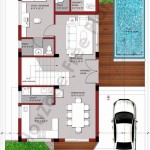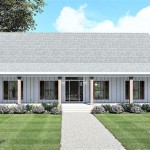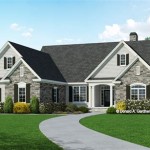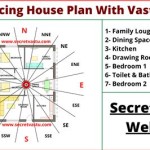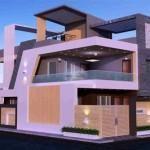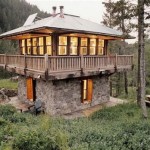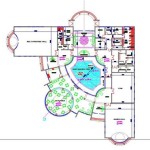Small Cabin Floor Plan Ideas: Maximizing Space and Comfort
The allure of a small cabin lies in its simplicity, affordability, and connection to nature. Designing a functional and comfortable small cabin, however, requires careful planning and consideration of floor plan options. The key is to maximize every square foot, creating a living space that feels spacious and meets the occupants' needs. This article explores various small cabin floor plan ideas, focusing on efficient space utilization and design strategies.
Prioritizing Functional Zones
Effective small cabin design starts with defining functional zones within the limited space. These zones typically include a living area, sleeping area, kitchen/dining area, and bathroom. The arrangement and size of each zone directly impact the overall livability of the cabin. Consider the primary intended use of the cabin when allocating square footage to each zone. A cabin primarily used for weekend getaways might prioritize the living area and outdoor spaces, while a cabin intended for full-time living would require a larger, more functional kitchen and bathroom.
Open-concept layouts are increasingly popular in small cabin design due to their ability to visually enlarge the space. By combining the living, dining, and kitchen areas into a single flowing space, the cabin feels less cramped and more inviting. Strategic furniture placement and the use of area rugs can help define these zones within the open layout. For example, a sofa and coffee table can delineate the living area, while a dining table and chairs create a distinct dining space. Consider using different flooring materials to further visually separate areas.
The bedroom area often presents a challenge in small cabin design. Depending on the cabin's intended use and the number of occupants, various options exist. A dedicated bedroom can provide privacy and separation but may require sacrificing space in other areas. A loft bedroom, accessed by a ladder or stairs, can be an excellent way to maximize vertical space and free up floor space on the main level. Alternatively, a Murphy bed or pull-out sofa can transform the living area into a bedroom at night, providing flexibility and conserving space during the day.
The kitchen and bathroom demand space-saving solutions. Compact appliances, such as apartment-sized refrigerators and combination washer-dryer units, are essential. Utilize vertical space with tall cabinets and shelves to maximize storage. In the bathroom, a corner shower or a wet-room style design can save space. Consider a composting toilet to reduce water usage and simplify plumbing requirements, particularly in off-grid cabins.
Optimizing Space Through Smart Design
Beyond the layout of functional zones, several design strategies can help optimize space in a small cabin. These strategies focus on maximizing natural light, minimizing clutter, and utilizing multi-functional furniture.
Natural light is essential for creating a bright and airy atmosphere in a small space. Large windows not only allow ample sunlight to enter but also provide views of the surrounding landscape, visually expanding the interior. Consider strategically placing windows to maximize sunlight exposure throughout the day while minimizing heat gain during the summer months. Skylights and clerestory windows can introduce natural light into areas that might otherwise be dark, such as hallways or bathrooms. Light-colored walls and ceilings also reflect light, further enhancing the brightness of the space.
Minimizing clutter is crucial in a small cabin. Built-in storage solutions, such as shelving units, drawers, and benches with hidden storage compartments, help keep belongings organized and out of sight. Regularly decluttering and adopting a minimalist approach to possessions can significantly improve the feeling of spaciousness. Consider incorporating vertical storage solutions, such as wall-mounted shelves and hooks, to maximize wall space and keep items off the floor.
Multi-functional furniture is a cornerstone of small cabin design. Items that serve multiple purposes, such as a coffee table with a lift-top that converts into a dining table or a storage ottoman that doubles as a footrest, can significantly reduce the need for multiple pieces of furniture. Foldable chairs and tables can be easily stored away when not in use, freeing up valuable floor space. Consider furniture with built-in storage, such as beds with drawers underneath or sofas with storage compartments in the armrests.
Consider the orientation of the cabin on the property. Optimizing solar gain can reduce heating costs in colder climates. Proper ventilation is crucial to maintain air quality and prevent moisture buildup. Overhangs and awnings can provide shade during the summer months, reducing the need for air conditioning. Thoughtful site planning contributes to the overall comfort and energy efficiency of the small cabin.
Exploring Specific Floor Plan Examples
To illustrate the principles of small cabin design, consider some specific floor plan examples. Each example demonstrates different approaches to space utilization and caters to various needs and preferences.
The Studio Cabin: A studio cabin typically consists of a single open space that combines the living, sleeping, and kitchen areas. A small bathroom is usually the only enclosed room. Studio cabins are ideal for individuals or couples seeking a minimalist retreat. The key to a successful studio cabin is careful space planning and the use of multi-functional furniture. A Murphy bed or pull-out sofa can transform the living area into a bedroom at night, while a small dining table can double as a workspace during the day. Built-in storage solutions are essential for keeping the space organized and clutter-free. Focus on maximizing natural light and incorporating outdoor living spaces, such as a deck or porch, to expand the usable area.
The One-Bedroom Cabin: A one-bedroom cabin offers more privacy and separation than a studio cabin. The bedroom is typically a separate enclosed room, providing a dedicated sleeping space. The living, dining, and kitchen areas may still be combined in an open-concept layout. One-bedroom cabins are suitable for couples or small families. The bedroom can be small, but efficient storage solutions, such as built-in closets and under-bed storage, are essential. A compact bathroom with a corner shower or a wet-room design helps conserve space. Consider incorporating a small mudroom or entryway to provide a space for storing shoes and coats, preventing dirt and clutter from entering the main living areas.
The Loft Cabin: A loft cabin utilizes vertical space to its full potential. The bedroom is typically located in a loft area, accessed by a ladder or stairs. This frees up floor space on the main level for the living, dining, and kitchen areas. Loft cabins are suitable for individuals or couples who don't mind climbing stairs. Ensure the loft area has adequate headroom and proper ventilation. Skylights can provide natural light and ventilation to the loft. The stairs or ladder leading to the loft can also incorporate storage space. Consider a spiral staircase or a ship's ladder to save space. The main level can feature a high ceiling to create a sense of spaciousness and allow for larger windows.
The Two-Story Cabin: Two-story cabins offer the most space but require a larger footprint. The bedrooms are typically located on the upper floor, while the living, dining, and kitchen areas are on the ground floor. Two-story cabins are suitable for larger families or groups. The layout can be more traditional, with separate rooms for each function. However, open-concept layouts can still be incorporated to enhance the feeling of spaciousness. Consider incorporating a balcony or deck off the upper floor to provide outdoor living space. Ensure the staircase is well-lit and accessible. A two-story cabin requires more extensive structural support and may be more expensive to build than a single-story cabin.
These floor plan examples provide a starting point for designing a small cabin. The specific layout and features of the cabin should be tailored to the occupants' needs, preferences, and the site's specific conditions. Careful planning and attention to detail are essential for creating a functional, comfortable, and inviting small cabin. Consider consulting with an architect or designer to develop a customized floor plan that meets specific requirements.

Small Cabin Designs With Loft Floor Plans House Plan

Small Cabin Designs With Loft Floor Plans

Pin On House And Deck

Rustic Vacation Homes Simple Small Cabin Plans Houseplans Blog Com

Small Cabin House Plans Floor Construction

The Small Cabin House Living Perfectly Large In 600 Square Feet

13 Best Small Cabin Plans With Cost To Build Craft Mart
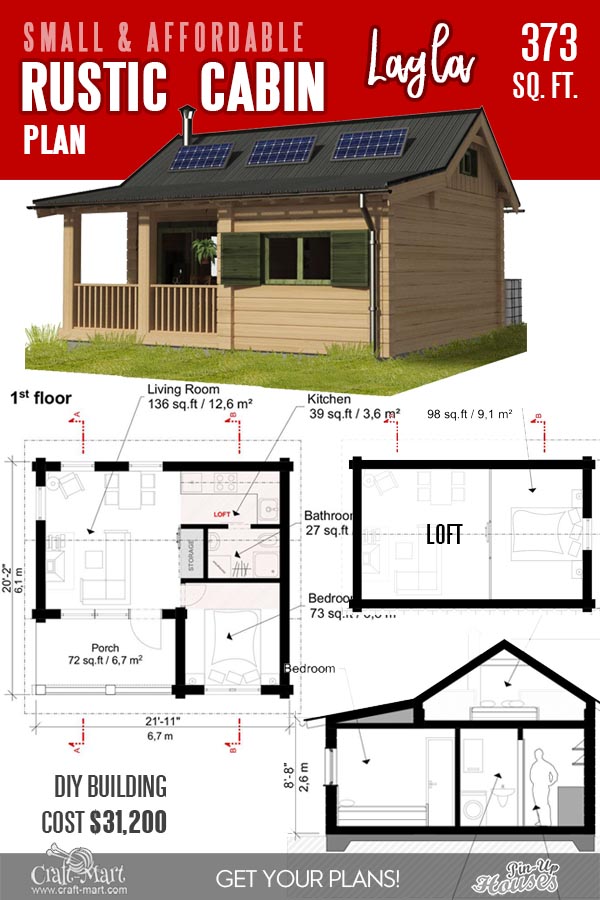
13 Best Small Cabin Plans With Cost To Build Craft Mart

Small Cabin House Plans Floor Construction

Rustic Vacation Homes Simple Small Cabin Plans Houseplans Blog Com

